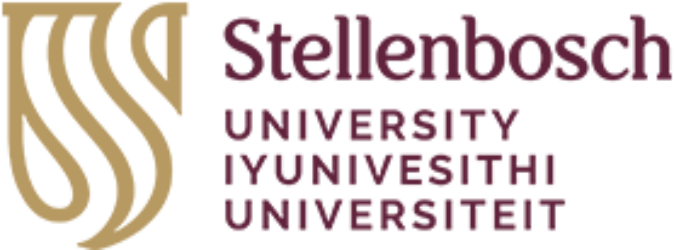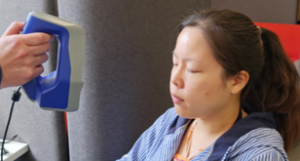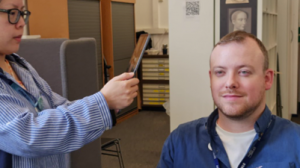Norman Hebler participated in StEP2023/2024, from 24 to 28 June, 2024 which offered various opportunities for the professional development of Library staff to improve the skills needed for their current roles and future development by visiting and/or collaborating with other academic or research libraries locally, nationally and internationally. Norman visited Liverpool John Moores University (UK), focusing on the institution’s AI initiatives.
Building a Future-Ready Face Database
The visit began with a deep dive into facial scanning technologies at LJMU’s acclaimed FaceLab. Central to this experience was understanding the comparative advantages of high-end 3D scanners (such as the Artec Spider) and more accessible tools like iPads and DSLR-based photogrammetry setups. Key challenges included scanning reflective surfaces and facial hair, making subject preparation crucial.
Unreal Engine’s MetaHuman tool, though limited in forensic accuracy, was flagged for its potential in visualizing historical figures. Most notably, the importance of standardisation, participant comfort, and blending cost-effective technologies emerged as foundational principles for the Stellenbosch Face Database (SFD) project.
Immersive Learning in Health Sciences
LJMU’s Faculty of Health demonstrated how 360-degree cameras can revolutionie medical training by capturing realistic scenarios—like cardiac arrest responses—without relying on expensive simulation software. Technical considerations such as optimal video length (under 10 minutes) and 5K resolution ensure usability without causing discomfort.

Crucially, the faculty emphasized ethical content creation, securing approval for real-life filming and conducting quality checks on video and sound. A phased approach to technology adoption, beginning with low-cost options and showcasing results on platforms like Instagram, was highlighted as a successful strategy for academic engagement.
Strategic Tech Selection: Less Can Be More
Through various examples, Hebler learnt that expensive technologies with low demand often underperform. Instead, adaptable solutions like mobile VR headsets and immersive rooms developed by companies such as Igloo Vision proved to be more sustainable.
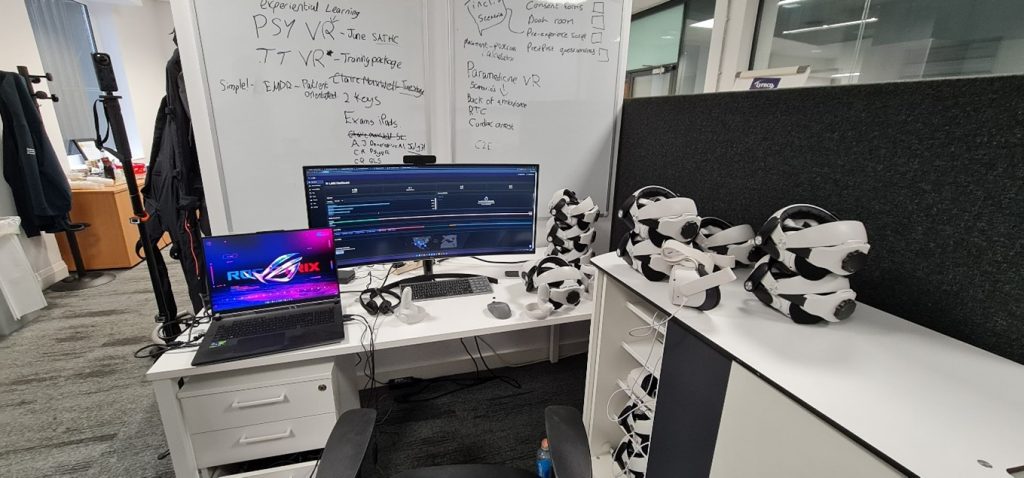
Power of Storytelling and AI in VR
At the Liverpool Screen School, storytelling was positioned as the heart of meaningful VR content. Training in tools like Unity and Unreal Engine was supplemented by creative AI applications for animation, generative voice, and image enhancement—tools that lower the technical barriers for students and staff alike.
Affordable devices like Insta360 cameras were preferred over bulky, outdated tech, emphasizing ease of use, scalability, and staying current with rapidly evolving technology.
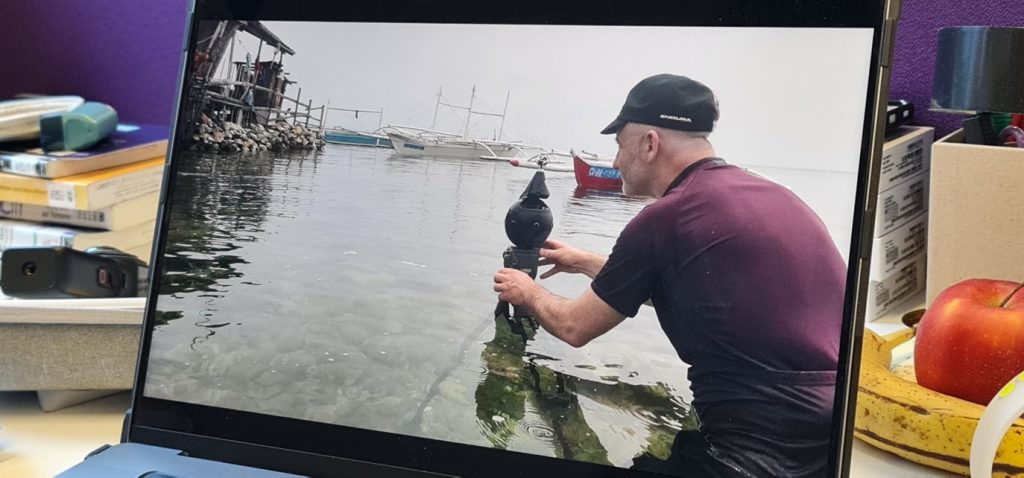
Enhancing Forensic Training Through Immersive Crime Scenes
The university’s crime scene simulation labs showcased the power of tactile learning. Rather than relying solely on VR—which can be inaccessible for some—educators constructed physical scenes with 3D-printed props and realistic layouts using minimal resources.
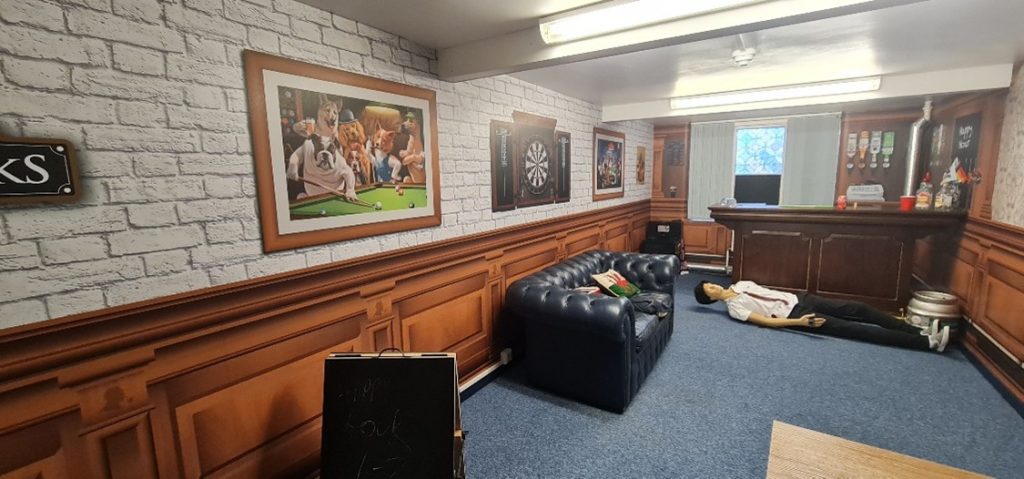
Immersive Classrooms in Engineering
The immersive room at LJMU’s engineering faculty featured floor-to-ceiling projections, interactive touch walls, and a built-in content library—all delivered without a subscription model. The flexibility to use original or preloaded content allowed for continuous refinement based on student needs.

Curating Immersive Exhibitions
Hebler’s visits to the Bees: A Story of Survival exhibition and Beyond Van Gogh demonstrated how multisensory design—sound, light, and interactive visuals—can emotionally connect audiences with educational content. These exhibitions proved that powerful storytelling and spatial design often matter more than expensive hardware.
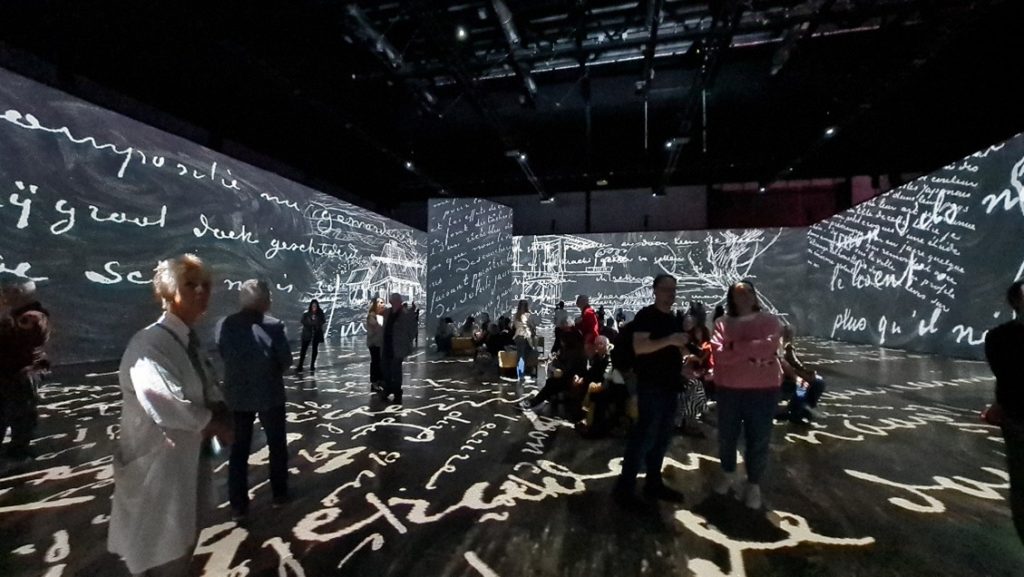
Makerspaces as Engines of Innovation
At both LJMU’s Fab Lab and a community makerspace (DoEs), the emphasis was on balancing high-tech resources with practical use. Whether printing with biodegradable PLA or creating moulds using vacuum formers, the facilities prioritised accessibility, sustainability, and training. Makerspaces encouraged experimentation while ensuring user safety through structured inductions and responsible equipment management..
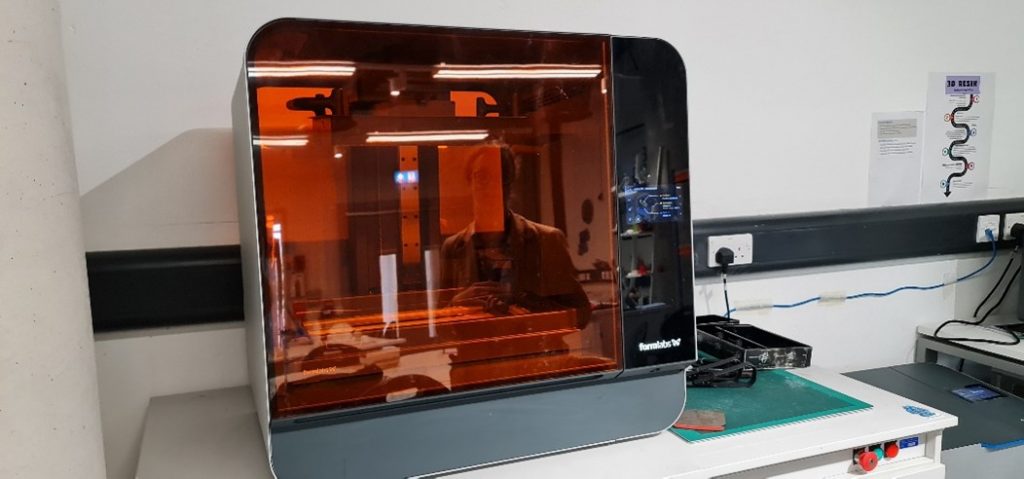
Libraries Reimagined: Tech Hubs for Learning
Finally, the LJMU Student Union Library showcased an evolved library model. High-spec PCs, 3D printing, loanable VR headsets, podcast studios, and take-home electronic kits were integrated into one digital learning space. While usage varied, the availability of up-to-date tools demonstrated a commitment to providing equitable access to educational technology.
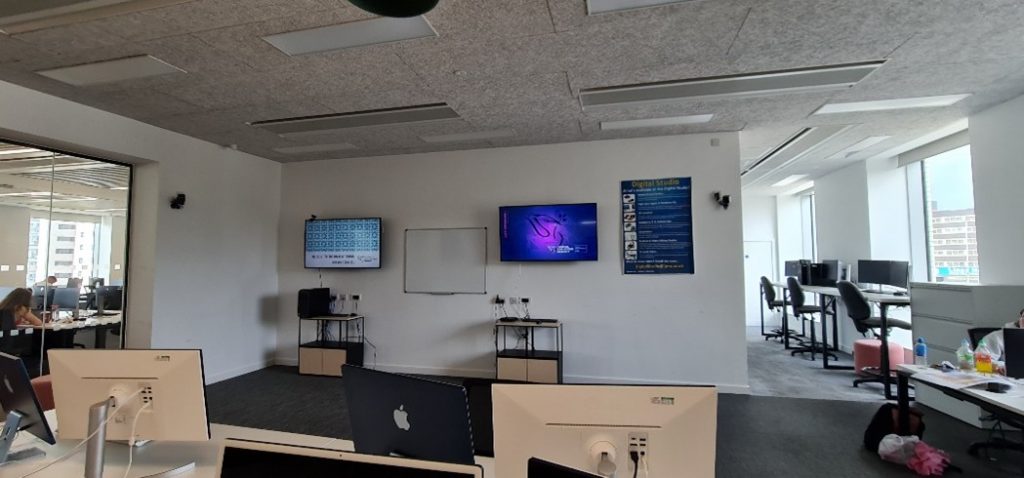

Final ThoughtsFrom forensic science to fine art, the insights gathered during this visit offer a roadmap for building more immersive, accessible, and innovative academic experiences. By strategically choosing scalable technologies, emphasizing storytelling and ethics, and promoting hands-on learning, institutions like Stellenbosch University can lead the way in 21st-century education.
Theresa Schoeman and Norman Hebler
For more information or enquiries, please visit https://libguides.sun.ac.za/makerspace/home
